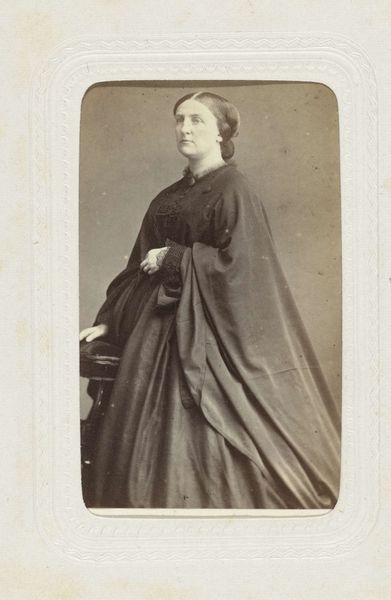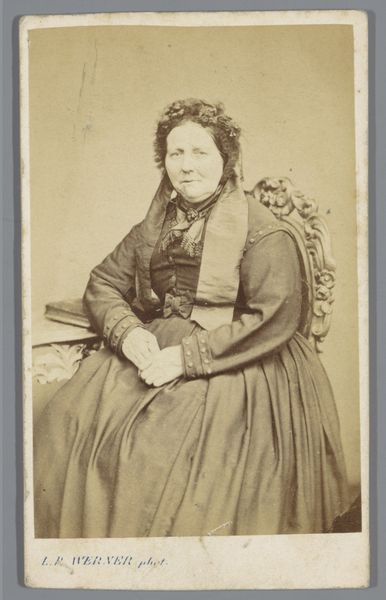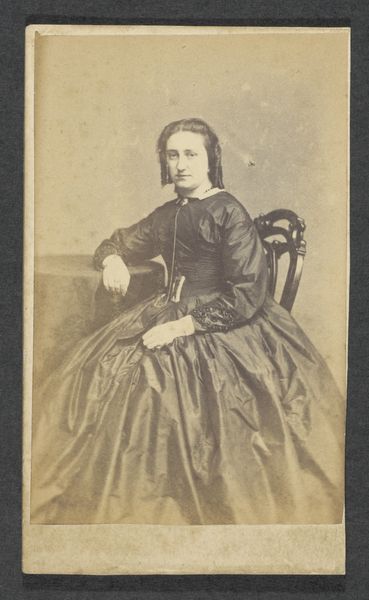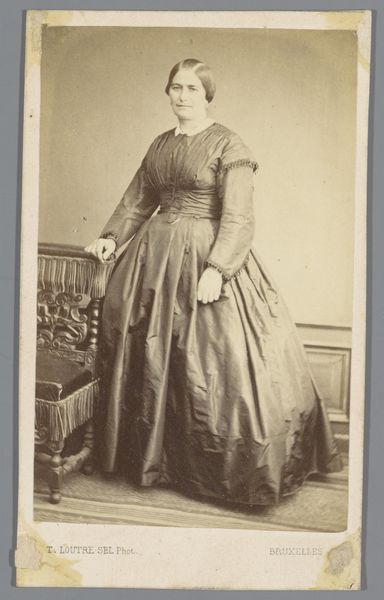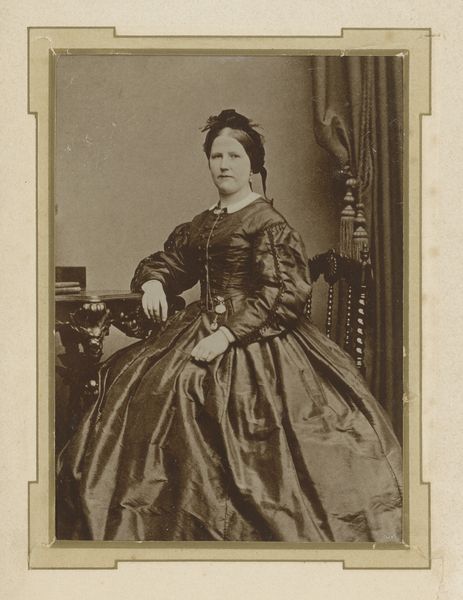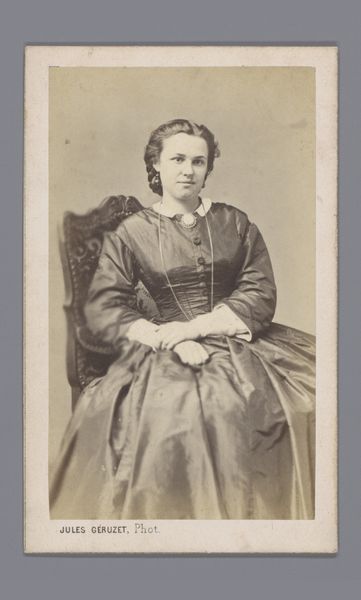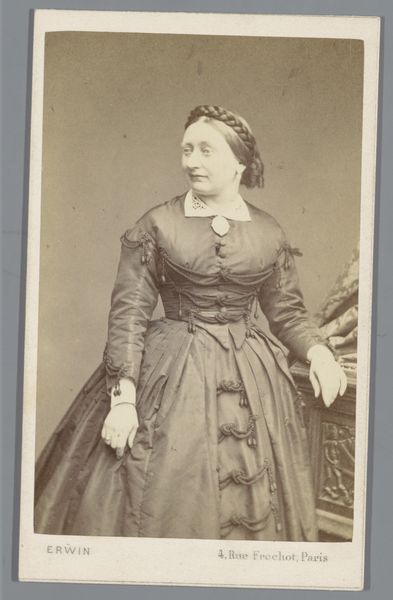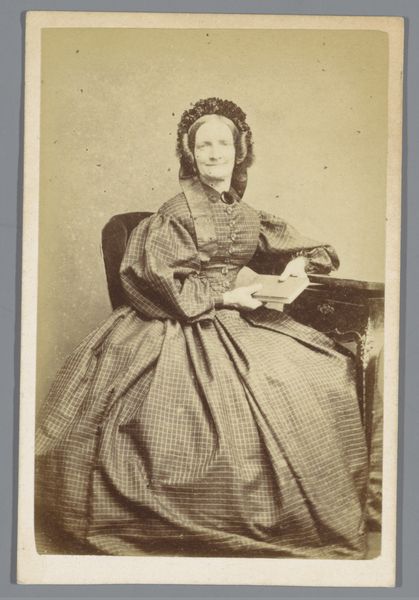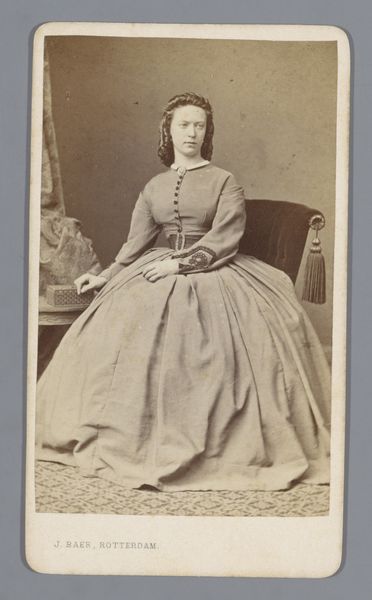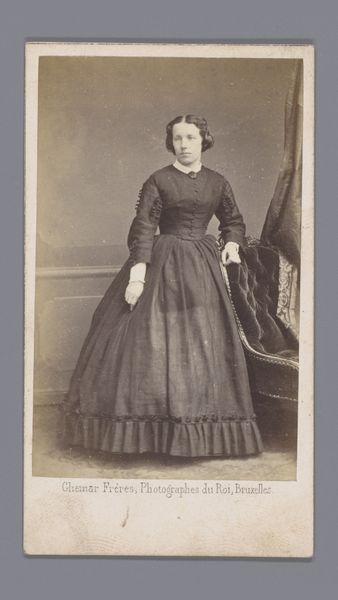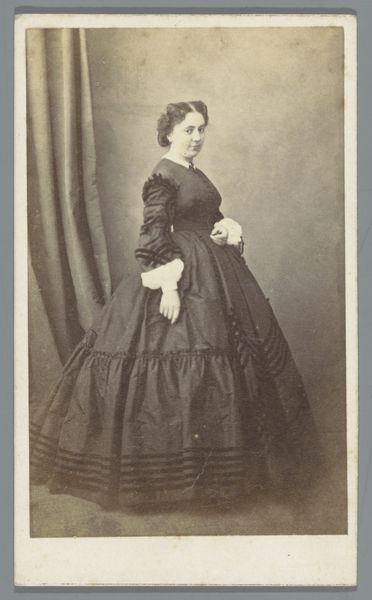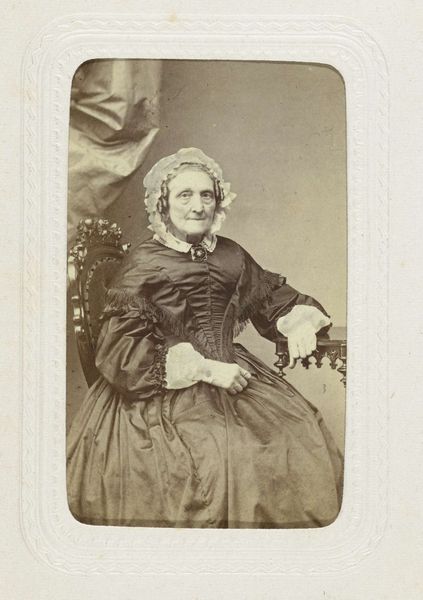
Studioportret van een vrouw op een stoel in een lange zwarte jurk c. 1863 - 1866
0:00
0:00
daguerreotype, photography
#
portrait
#
daguerreotype
#
archive photography
#
photography
#
historical photography
Dimensions: height 80 mm, width 54 mm, height 296 mm, width 225 mm
Copyright: Rijks Museum: Open Domain
Editor: So this daguerreotype by Carl Rensing, probably taken in the mid-1860s, depicts a woman in a long dark dress. It’s striking how the texture of the fabric comes across despite the limitations of early photography. How do you interpret this work, especially considering the materials involved? Curator: I’m immediately drawn to the dress itself. Look at the sheer volume of material! The textile production of the mid-19th century was rapidly changing thanks to industrialization, so the accessibility, cost, and labor involved in creating such a garment are important considerations. Was this dress mass-produced, or custom-made? What was it made from? Editor: That’s fascinating. I hadn't considered the economic implications. The fact that she's holding a book, combined with the expensive-looking fabric, gives the impression of an educated and fairly well-off woman, surely? Curator: Perhaps. But how might the act of commissioning this portrait have functioned within a burgeoning culture of photographic representation and commodity culture? It certainly served a function different than a painted portrait in prior decades. Furthermore, do we know anything about the photographer's social standing or the materials used to produce the daguerrotype? The wealth may lie as much with the means of image production as with the subject herself. Editor: So, you’re saying that studying the materials and context reveals the complexities of wealth and social standing beyond just what is immediately visible? Curator: Exactly. The very process of making and owning this image speaks volumes about 19th-century society and its relationship to labor and material. Editor: I'll definitely look at photographs differently from now on. Thanks for pointing out those details. Curator: It's crucial to examine beyond face value; keep digging deeper!
Comments
No comments
Be the first to comment and join the conversation on the ultimate creative platform.
